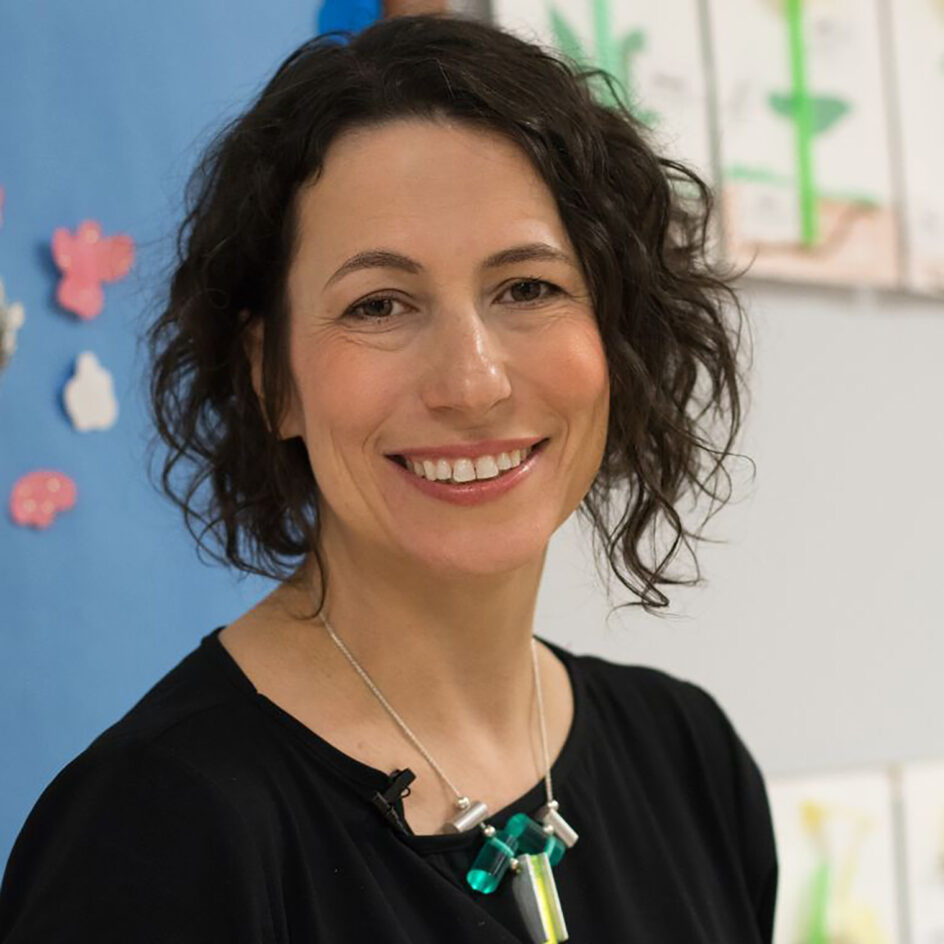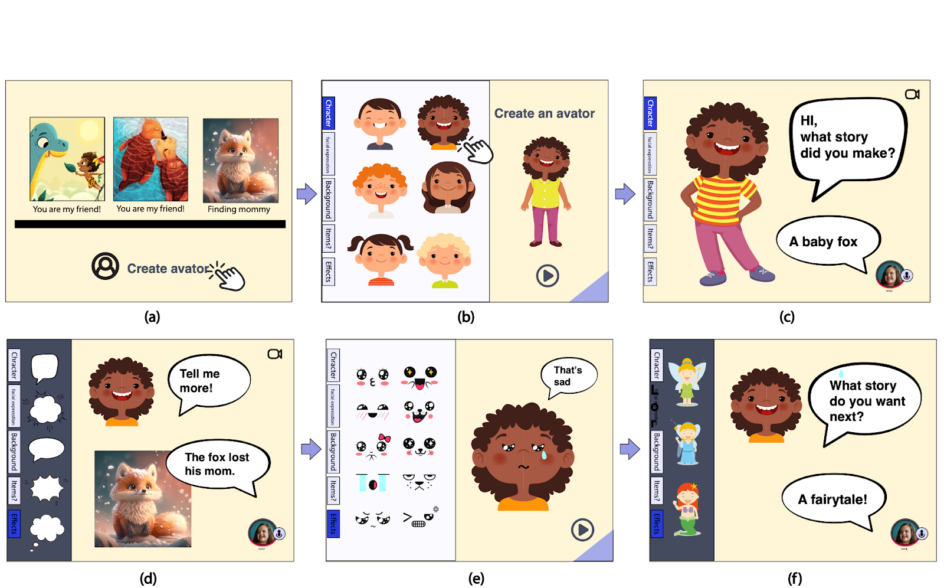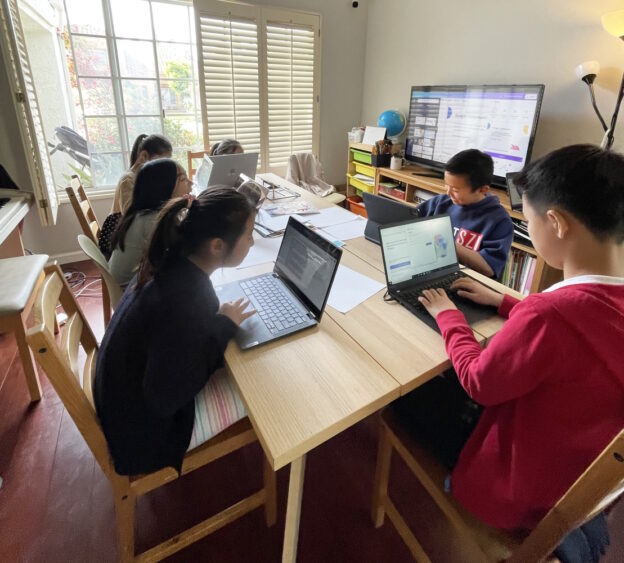AIStory: Leveraging Generative AI for Culturally Responsive Learning
A mother moves her young family from Korea to the United States. Years later, she finds herself struggling to stay involved in her children’s education. She’s not sure how to support their extracurricular learning, especially given that she doesn’t speak fluent English. She hopes to find an engaging educational resource.


Fourth-year informatics Ph.D. student Ariel Han created this profile of an immigrant mother to exemplify the types of users she hopes to help while working on her dissertation at UC Irvine. Collaborating with her advisor, Professor Kylie Peppler of the Donald Bren School of Information and Computer Sciences (ICS), Han is exploring how to leverage generative artificial intelligence (AI) for culturally responsive learning. In particular, Han and Peppler are working with a team of CreativityLabs researchers to design a web-based platform for AI-supported storytelling.
Their AIStory project, which has received recent support from the National Science Foundation (NSF) and funding from UCI Beall Applied Innovation, offers personalized, interest-driven learning for elementary school students to enhance their literacy and storytelling skills in an inclusive environment.
“AIStory is an educational content-creation application that lets kids and parents co-create stories together or individually based on their interests,” says Han. “We want to make it culturally responsive, so it can translate the story into other languages for family and friends.”
Piloting the Platform
Recognizing the growing demand for personalized learning and acknowledging the overwhelming workload of teachers, Han set out to identify an AI-based solution that is adaptive and playful.
A group of CreativityLabs researchers then started piloting the idea through a small contract with the Santa Ana libraries, testing initial prototypes and working closely with various stakeholders (parents, librarians, and children). The prototypes explored how to leverage ChatGPT and AI art generators for educational and engaged storytelling activities. The current interface has a chatbot, which prompts users for idea generation, and a visual editor, which lets users add images to further customize their story.

“The librarians love this work,” says Peppler. “They are looking for ways to engage parents and children in literacy-building activities, and they want to stay current with the AI trend… so I think that’s where we come in.” As learning scientists, Han and Peppler are examining ways in which technology such as ChatGPT can encourage educational growth.
“How do you make kids fall in love with writing and the power of storytelling?” asks Peppler. “We’re excited that this work is really resonating with the current moment.”
Garnering Additional Support
In early April, NSF announced that AIStory was one of 100 teams advancing to the Discovery Round for its Visionary Interdisciplinary Teams Advancing Learning (VITAL) Prize Challenge. Teams making it to the Discovery Round receive training through the NSF Innovation Corps program, which offers entrepreneurial education and mentoring to help teams identify customers and effectively move technologies from a lab to the marketplace. NSF will announce the semifinalists by the end of July, and the advancing teams will each receive $70,000 in funding and a chance to win the $250,000 top prize.
Also in April, Han was selected to receive UCI Beall Applied Innovation’s Graduate Innovation Fellowship. The one-year fellowship program, which starts in July, comes with a $5,000 stipend and entrepreneurship training to help graduate students transform research ideas into successful business ventures.
“As we shared Ariel’s vision … it’s just kind of taken off with a reckless abandon,” says Peppler. “Part of what Ariel has been looking at is language practices, especially for parents who [recognize] their kids are struggling at school but they don’t fluently speak English. So how do they help?”
Through Han’s dissertation research, and with help from NSF and Applied Innovation, the goal is to build a tool that decenters English-only practices and helps parents better engage. “Any language is actually really positive for language development, and that’s something the schools can’t offer you,” says Peppler. “The teachers can’t talk in different languages or [teach] about folklore based on your family history.”
 Next Steps
Next Steps
Feedback on AIStory from students has been positive. “They were excited about using the chatbot system to create their own unique stories, and especially about trying to generate images along with the story creation,” says Han. However, parents have shared concerns, including questions about AI bias and authorship. Han says the team is working collaboratively with all stakeholders to address these issues.
“We are still conducting interviews with teachers and parents and children, and we are going through an iterative design process to implement the system,” she says. They are currently on the third iteration of the design and continue to make improvements.
“How do we reharness AI [and] bring culture into this work,” asks Peppler, “so that it’s not created in an absence of culture, but really is a way to help families share cultural stories?” That is one of many questions this work will strive to answer over the next 12 months.
— Shani Murray